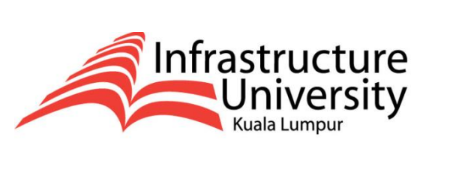Pengaruh Tingkat Pendapatan dan Jumlah Anggota Keluarga Terhadap Konsumsi Gas Elpiji Pada Sektor Rumah Tangga
DOI:
https://doi.org/10.21154/joie.v1i1.3082Keywords:
Income, number of family, consumptionAbstract
Pandemi Covid-19 mempunyai dampak di berbagai bidang salah satunya di bidang ekonomi terutama terhadap pendapatan masyarakat Indonesia. Penelitian ini membahas pengaruh pendapatan dan jumlah anggota keluarga terhadap konsumsi gas elpiji pada sektor rumah tangga selama masa pandemi Covid-19. Metode penelitian dengan kuesioner digunakan pada penelitian ini. Responden merupakan rumah tangga biasa di wilayah Kabupaten Pacitan. Berdasarkan hasil pengolahan data dengan menggunakan regresi linear berganda diperoleh persamaan yang berarti bahwa setiap satu satuan skor konsumsi gas elpiji akan dipengaruhi oleh X1 (pendapatan) sebesar 0.193 dan X2 (jumlah anggota keluarga) sebesar 0.451, dapat disimpulkan bahwa jumlah anggota keluarga mempunyai pengaruh yang lebih besar terhadap konsumsi gas elpiji. Koefisien determinasi sebesar 51.4% dan sisanya 48.6% dijelaskan oleh variabel lain yang belum diteliti. Berdasarkan uji hipotesis diperoleh secara parsial pendapatan berpengaruh signifikan terhadap konsumsi gas elpiji dengan thitung = 4.899 lebih besar dari ttabel = 1.664. Jumlah keluarga berpengaruh secara signifikan dengan nilai thitung sebesar 6.129 lebih besar dari nilai ttabel = 1.664. Sedangkan secara simultan diperoleh Fhitung = 41.802 > Ftabel = 3.11. Hal ini berarti hipotesis yang diajukan bahwa pendapatan dan jumlah anggota keluarga berpengaruh terhadap konsumsi gas elpiji dapat diterima. Hasil ini berdampak praktis terhadap pengaturan konsumsi rumah tangga.
The Covid-19 pandemic has an impact in various fields, one of which is in the economic sector, especially on the income of the Indonesian people. This study discusses the effect of income and number of family members on LPG consumption in the household sector during the Covid-19 pandemic. The research method with a questionnaire was used in this study. Respondents are ordinary households in the Pacitan Regency. Based on the results of data processing using multiple linear regression, an equation is obtained which means that each unit score of LPG gas consumption will be influenced by X1 (income) of 0.193 and X2 (number of family members) of 0.451, it can be concluded that the number of family members has a more influence big on LPG gas consumption. The coefficient of determination is 51.4% and the remaining 48.6% is explained by other variables that have not been studied. Based on the hypothesis test, it was obtained that income partially had a significant effect on LPG consumption with tcount = 4,899 greater than ttable = 1,664. The number of families has a significant effect on the value of tcount of 6,129, which is greater than the value of ttable = 1,664. Meanwhile, simultaneously obtained Fcount = 41,802> Ftable = 3.11. This means that the hypothesis that the income and number of family members have an effect on LPG consumption can be accepted. These results have practical implications for household consumption regulation
References
Arif, M. N. R. A. (2010). Teori mikro ekonomi suatu perbandingan ekonomi Islam dan ekonomi konvensional. Kencana Prenada Media Group.
Estiri, H., Gabriel, R., Howard, E., & Wang, L. (2013). Different Regions, Differences in Energy Consumption: Do Regions Account for the Variability in Household Energy Consumption? SSRN Electronic Journal, 134. https://doi.org/10.2139/ssrn.2323248
Handarini, O. I., & Wulandari, S. S. (2020). Pembelajaran Daring Sebagai Upaya Study From Home (SFH) Selama Pandemi Covid 19. Jurnal Pendidikan Administrasi Perkantoran, 8(3), 496”“503.
Hidayat, M. (2010). Pengantar ekonomi syariah. Zikrul MEdia Group.
Huda, N. dkk. (2009). Ekonomi makro islam. Prenada Media Group.
Juntra, L., Program, U., Gizi, S., Kemenkes, P., Jalan, K., & Tallo -Kupang, P. A. (2020). Gaya Hidup Mayarakat Nusa Tenggara Timur Dalam Menghadapi Pandemi Corona Virus Disease 19 (Covid-19). Jurnal Kesehatan Masyarakat, 7(1), 34”“40. https://ojs.uniska-bjm.ac.id/index.php/ANN/article/view/2994
Mantra, I. D. . (2003). No Title. Pustaka Raja.
Nababan, H. (2020). The New Trends of Food in Indonesia and Its Challenges. Https://Cfns.Ugm.Ac.Id/2020/10/06/Tantangan-Dan-Tren-Makanan-Di-Indonesia-Berubah/.
Nurmanaf, A., & Susilowati, S. (2000). Struktur kesempatan kerja dan kaitannya dengan pendapatan dan penngeluaran rumah tangga pedesaan. Prosiding Perspektif Pembangunan Pertanian Dan Pedesaan Dalam Era Otonomi Daerah, 88”“93.
Pitts, A., & Ashby, R. (2011). No TitlA Study of the Relationships between Income, Energy Consumption and Home Insulation Installation. UK Energy Research Centre Conference: Energy and People: Futures, Complexity and Challenge.
Pranadji, D., Djamaludin, M., & Kiftiah, N. (2010). Analisis perilaku penggunaan lpg pada rumah tangga di kota Bogor. Jurnal Ilmu Keluarga Dan Konsumen, 3(2), 173”“183.
Rahardja, P., & Manurung, M. (2008). Pengantar ilmu ekonomi (mikroekonomi & makroekonomi) (3rd ed.). Fakultas Ekonomi UI.
Reksoprayitno. (2004). Sistem ekonomi dan demokrasi ekonomi. Bina Grafika.
Samuelson, P. ., & Nordhaus, W. . (2004). Ilmu mikroekonomi (17th ed.). PT Media Global Edukasi.
Setiawan, S. R. . (2020). Survei: 84 persen masyarakat akui pendapatan turun karena corona.
Suprajitno. (2003). Asuhan keperawatan keluarga: aplikasi dan praktik. Buku Kedokteran EGC.
Todaro, M. (2000). Pembangunan ekonomi di dunia ketiga. Erlangga.


















